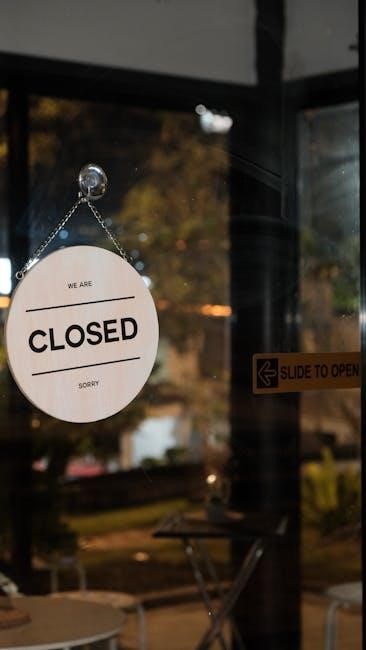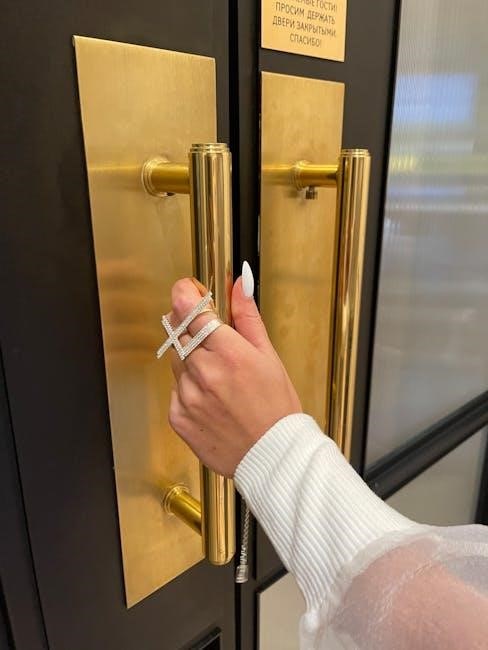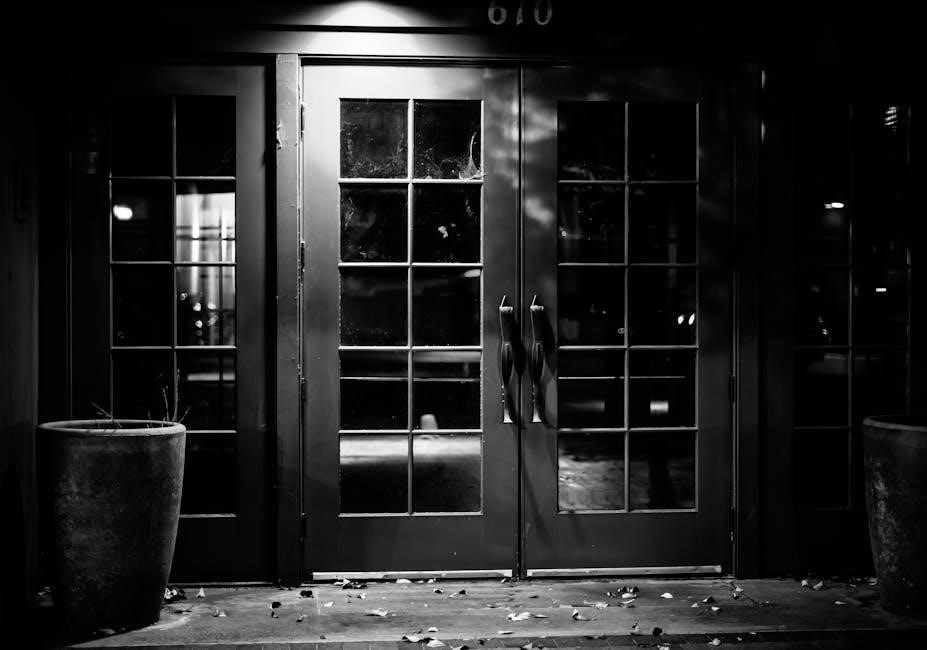The issue of a Honda Odyssey sliding door not closing manually is a common problem, often linked to electrical or mechanical faults. Understanding the root cause and applying the right troubleshooting steps is essential for restoring proper function.
Understanding the Problem
The issue of a Honda Odyssey sliding door not closing manually is a frustrating and common problem that can stem from various mechanical or electrical faults. Many owners have reported that after a battery replacement or electrical system reset, the door fails to respond to manual operation, leaving it stuck in an open or partially closed position. This problem can arise due to faulty latch mechanisms, damaged rollers, or issues with the door’s alignment on its track. In some cases, the door may appear to function electronically but refuses to budge when attempting manual closure. Understanding the root cause is crucial, as it directly impacts both safety and convenience, especially for families relying on the vehicle for daily use.
Importance of a Functional Sliding Door
A functional sliding door in the Honda Odyssey is essential for both convenience and safety. Families rely on these doors for easy access, especially when managing children or cargo. When the door fails to close manually, it can hinder daily activities and pose a safety risk, especially in moving vehicles. Proper operation ensures secure closure, preventing potential hazards like debris entry or unauthorized access. Addressing the issue promptly maintains the vehicle’s functionality and overall user experience, making it crucial to diagnose and repair efficiently.

Common Causes of the Issue
The Honda Odyssey sliding door may fail to close manually due to faulty motor systems, limit switch malfunctions, fuse-related issues, or improper toggle switch positioning.
Faulty Motor System
A faulty motor system is a primary cause of the Honda Odyssey sliding door malfunction. The motor drives the door’s operation, and if it fails, the door may not open or close. Issues such as worn-out gears, electrical faults, or motor burnout can prevent proper function. Additionally, the limit switches, which signal the motor to stop at the correct positions, may malfunction, causing the door to stop mid-operation. If the motor system is damaged or corroded, manual operation may also be hindered. It is essential to inspect the motor and its components for any signs of wear or damage. If the door does not respond to manual attempts, the motor system likely requires professional attention or replacement to restore functionality.
Limit Switch Malfunction
A limit switch malfunction is another common issue causing the Honda Odyssey sliding door to fail. The limit switch regulates the door’s opening and closing limits by sending signals to the motor. If the switch is faulty, the door may stop mid-operation or refuse to close manually. Symptoms include the door halting unexpectedly or failing to respond to control inputs. Over time, wear and tear can cause the switch to misalign or corrode, disrupting its ability to communicate with the motor system. In some cases, the door may appear to work electronically but fail during manual operation. Testing and replacing the limit switch can often resolve the issue. If the problem persists, further inspection of the electrical connections or professional assistance may be necessary to restore proper door functionality.
Fuse-Related Problems
Fuse-related issues are a common culprit behind the Honda Odyssey sliding door’s failure to close manually. A blown fuse in the power sliding door circuit can disrupt the electrical supply, causing the door to malfunction. Specifically, fuse 13 in the passenger-side fuse box is often linked to this problem. If the fuse is blown or damaged, the door’s motor and control systems may not function properly, even during manual operation. To address this, locate the fuse box under the front passenger leg area, remove fuse 13, and inspect it for damage. If blown, replacing it with a new fuse of the same rating can restore functionality. Ensure all fuses are securely in place before attempting to close the door manually. If the issue persists, further diagnostic steps or professional assistance may be required to resolve the problem effectively.
Toggle Switch Positioning
The toggle switch positioning is a critical factor in the manual operation of the Honda Odyssey sliding door. If the toggle switch, located next to the power sliding door buttons, is set to the wrong position, it can lock the door controls, preventing manual closing. Ensure the toggle switch is flipped to the “up” position to enable manual operation. If the switch is in the “down” position, the sliding door buttons will be locked, and the door won’t respond to manual inputs. After adjusting the toggle switch, test the door’s functionality by pulling the handle to close it manually. If the issue persists, further inspection of the door’s mechanical components or electrical systems may be necessary to resolve the problem effectively.

Initial Troubleshooting Steps
Begin by checking the fuse box for blown fuses and ensuring the toggle switch is properly positioned. Manually operate the door and inspect the track and rollers for obstructions or damage.
Checking the Fuse Box
Locate the fuse box under the front passenger leg area. Remove and inspect fuse 13, which controls the sliding door system. Replace it if damaged or blown. Restore power and test the door’s operation.
Testing the Toggle Switch
The toggle switch, located near the power sliding door buttons, controls the door’s functionality. Ensure the switch is in the upright position, as a downward position disables the doors. Flip the switch up and test the door using the buttons or handles. If the door operates after switching, the issue was resolved. If not, inspect the switch for damage or electrical issues. Consult a professional if the problem persists. This step is crucial for diagnosing electrical malfunctions before proceeding to more complex repairs.
Manually Operating the Door
Manually operating the sliding door is a straightforward process that can help diagnose issues. First, ensure the main power switch for the sliding doors is turned off. Next, locate the door’s manual override handle, usually found near the door’s edge or in the door jam. Gently pull the handle while applying slight pressure to the door to open or close it. Once the door is near the closed position, the auto-closer feature should engage to fully secure it. If manual operation fails, it may indicate a mechanical issue with the door’s rollers or latch mechanism. Regular lubrication of moving parts can prevent such problems. Always refer to your vehicle’s manual for specific instructions on manual operation.
Inspecting the Track and Rollers
Inspecting the track and rollers is a critical step in diagnosing sliding door issues. Begin by visually examining the door’s track for debris, dirt, or obstructions. Clean the track thoroughly with a soft cloth or brush to ensure smooth movement. Next, check the rollers attached to the door for signs of wear, corrosion, or misalignment. If the rollers are damaged or seized, the door may struggle to move properly. Lubricate the rollers with silicone-based spray to reduce friction and improve functionality. If the door has come off its track, gently reseat it by aligning the rollers with the track and pushing the door firmly back into place. Regular maintenance of these components can prevent future malfunctions and ensure the door operates smoothly.

Detailed Diagnostic Procedures
Examine the door’s latch mechanism for proper alignment and movement. Ensure the rear latch is not seized or obstructed, as this can prevent manual closing.
Examining the Latch Mechanism
The latch mechanism is critical for proper door closure. Inspect the rear latch for any signs of seizing or obstruction. Remove the interior door panel to access the latch assembly. Check if the latch is aligned correctly and moves freely. Lubricate the mechanism if necessary to ensure smooth operation. A seized or misaligned latch can prevent the door from closing manually. In some cases, such as the 2018 Honda Odyssey, replacing the internal rear latch cable may be required to resolve the issue. Ensure all components are clean and free from debris, as dirt or rust can impede proper function. If the latch remains unresponsive after lubrication, consider professional assistance for further diagnosis and repair.
Lubricating Moving Parts
Lubricating the sliding door’s moving components is a crucial step in resolving manual closure issues. Apply a silicone-based lubricant to the rollers, hinges, and tracks to reduce friction and eliminate sticking points. Ensure the latch mechanism is well-lubricated, as a seized latch can prevent proper closure. Avoid using grease, as it may attract dirt and worsen the problem; Regular lubrication maintenance can prevent future issues. If the door still doesn’t close smoothly after lubrication, inspect for misaligned parts or debris. Properly lubricated components ensure smooth operation and extend the lifespan of the door’s mechanical systems. Neglecting this step can lead to more severe mechanical failures over time. Always test the door’s functionality after lubrication to confirm improvement.
Checking the Fuel Door Sensor
The fuel door sensor plays a role in the sliding door’s operation. If the fuel door is open or sticking out, the sensor may disable the sliding door to prevent damage. Ensure the fuel door is fully closed and aligned properly. If the fuel door is misaligned, adjust it to ensure it closes securely. Test the sliding door after addressing the fuel door sensor. If the issue persists, the sensor itself may be faulty and require replacement. Regularly checking and maintaining the fuel door sensor can prevent such issues from arising. This step is crucial for ensuring all safety mechanisms are functioning correctly, allowing the sliding door to operate smoothly. Addressing this sensor can often resolve unexpected malfunctions in the door’s manual and automatic modes.
Advanced Repair Solutions
Advanced repair solutions may involve replacing the rear latch cable, fixing the door track bumper, or addressing motor and control module issues. Regular lubrication of moving parts is essential.
Replacing the Rear Latch Cable
Replacing the rear latch cable is a common solution for Honda Odyssey sliding door issues. The cable often seizes or fails, preventing the door from closing properly. To fix this, remove the door panel and disconnect the old cable from the latch mechanism. Install a new cable, ensuring it is securely attached to both the latch and the door’s operating system. Lubricate the latch mechanism to ensure smooth operation. This repair requires basic tools and mechanical knowledge. If the issue persists, consult a professional for further assistance. Regular maintenance and inspections can help prevent such problems in the future. Always test the door’s operation after completing the repair to ensure proper function.
Fixing the Door Track Bumper
Fixing the door track bumper is a common solution for Honda Odyssey sliding door issues. Over time, the bumper, which fits between the door and the track, can become brittle and fall out, causing the door to malfunction. To repair this, remove the sliding door and inspect the track area. If the bumper is missing or damaged, replace it with a new one, ensuring it is securely fitted. This simple fix often resolves issues where the door refuses to close manually. Regularly inspecting and maintaining the track and bumper can prevent such problems. If the issue persists, consider consulting a professional for further diagnosis. Properly aligning the door and ensuring the track is clean can also improve functionality. This cost-effective solution is a key step in restoring your sliding door’s performance.
Addressing Motor and Control Module Issues
Motor and control module problems are common causes of sliding door malfunctions in the Honda Odyssey. If the motor system fails, the door may not respond to commands or move unevenly. Start by checking the fuse box for blown fuses related to the power sliding doors. If the fuses are intact, inspect the motor and control module for signs of damage or wear. Testing the motor’s electrical connections can help identify if it is receiving power. If the motor is faulty, replacing it may be necessary. Additionally, the control module, which regulates the door’s operation, may need reprogramming or replacement if it is malfunctioning. In some cases, resetting the system by disconnecting the battery and manually operating the door can resolve the issue. Always consult a professional if advanced electrical work is required.

Preventative Measures
Regular maintenance checks, lubricating moving parts, and ensuring proper alignment can help prevent sliding door issues. Early detection of wear and tear is crucial for long-term functionality.
Regular Maintenance Checks
Regular inspection of the sliding door mechanism is vital to prevent malfunctions. Checking the rollers, tracks, and latch systems ensures smooth operation. Lubricate moving parts periodically to reduce friction and wear. Additionally, verify that all electrical connections and fuses are functioning properly. Schedule annual checks with a certified technician to identify potential issues early. Addressing minor problems before they escalate can save time and money. A well-maintained sliding door system enhances reliability and safety, ensuring optimal performance over the vehicle’s lifespan.
Updating Software and Firmware
Ensuring the sliding door’s electronic control system is up-to-date is crucial for proper functionality. Outdated software or firmware can cause malfunctions, such as doors not closing manually. Check for updates through the dealership or Honda’s official website. Use a USB drive to install the latest software version, following the manufacturer’s instructions. This process may require resetting the system after installation. Updated software can resolve issues like sensor miscommunication or faulty motor controls. Regularly updating firmware helps maintain optimal performance and prevents recurring problems. If unsure, consult a professional technician to perform the update correctly and ensure all systems are compatible.
Addressing a Honda Odyssey sliding door that won’t close manually requires proper diagnosis and timely repairs. Regular maintenance and software updates can prevent future issues and ensure smooth operation.
To resolve the issue of a Honda Odyssey sliding door that won’t close manually, several solutions can be applied. First, ensure the main power switch for the sliding doors is turned off, allowing manual operation. Check the fuse box for blown fuses and replace them if necessary. Resetting the system by disconnecting the battery or removing specific fuses can often restore functionality. Additionally, inspect and clean the door track and rollers to ensure smooth movement. Lubricating the moving parts can also help resolve mechanical issues. If the door still doesn’t close, examining the latch mechanism and ensuring it is free from obstructions is crucial. Finally, updating the vehicle’s software or firmware may address any electronic malfunctions. Regular maintenance and timely repairs can prevent such issues from recurring.
When to Seek Professional Help
If the sliding door on your Honda Odyssey still refuses to close manually despite basic troubleshooting, it may be time to seek professional assistance. Issues like a seized latch mechanism, damaged rollers, or faulty sensors often require specialized tools and expertise. Additionally, if the door’s electrical system is malfunctioning, such as persistent problems with the motor or control module, a certified technician should be consulted; Professional help is also recommended if the door’s track or bumper is severely damaged, as improper repairs could lead to further complications. Don’t hesitate to contact a qualified mechanic or a Honda service center for a thorough diagnosis and repair to ensure your vehicle’s safety and functionality.
